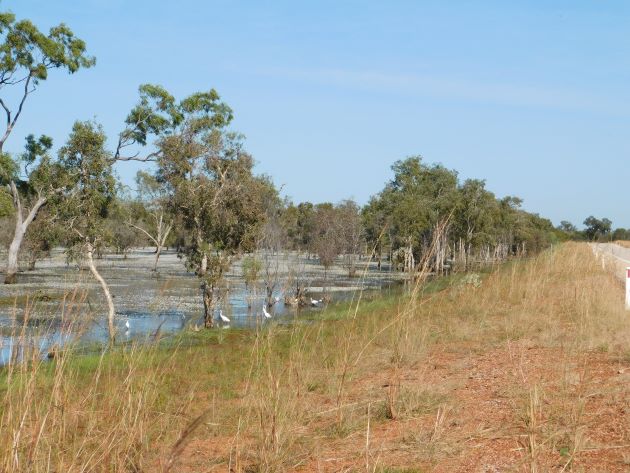
Over recent months we have mostly travelled south along the Great Northern Highway across Roebuck Plains to observe the bird-life beside the flooded road. Now the land is starting to dry out, we have ventured a little way to the north too. There are still some good flooded areas around seventy kilometres from Broome heading towards Derby. They are clearly visible by the huge expanse of white and pink flowers growing in and around the water. These are mostly a native marshwort.
There is enough of a gravel area for you to pull off the road safely and observe the birds that inhabit the area when it is flooded. The birds are mostly Ibis, Egrets and Herons, but there are also smaller passerines bouncing around in the trees. Many native trees are flowering, offering insects and nectar to the birds. Initially the birds might be slightly out of sight, but it doesn’t take them long to move back out into the open and feed.
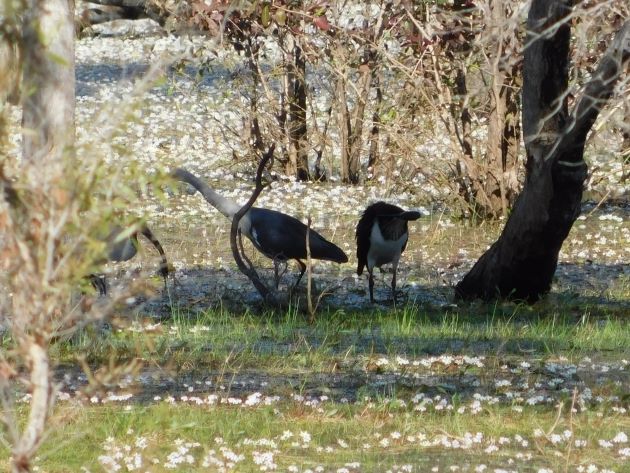
Australian White Ibis, Straw-necked Ibis and White-necked Heron
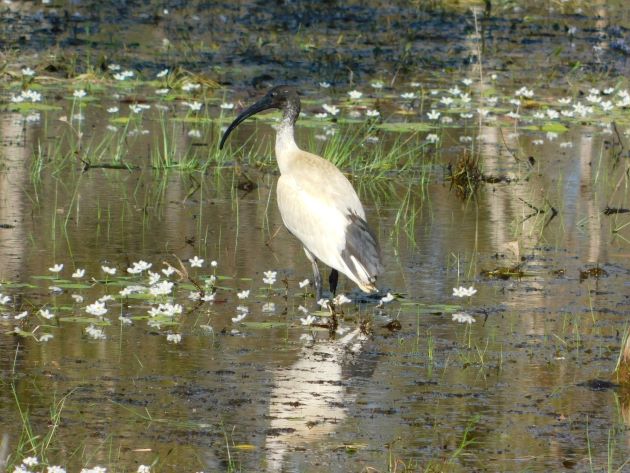
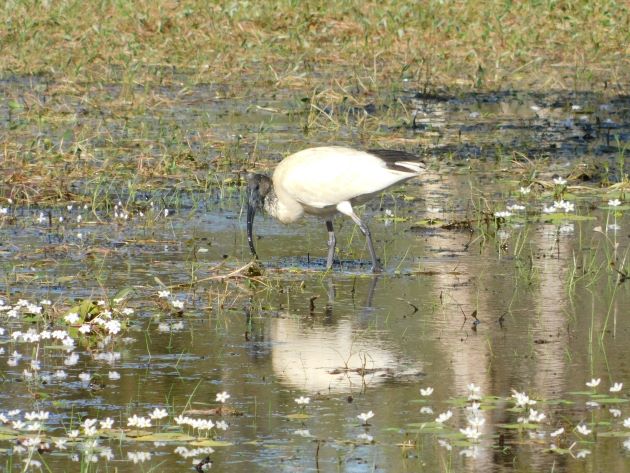
Australian White Ibis
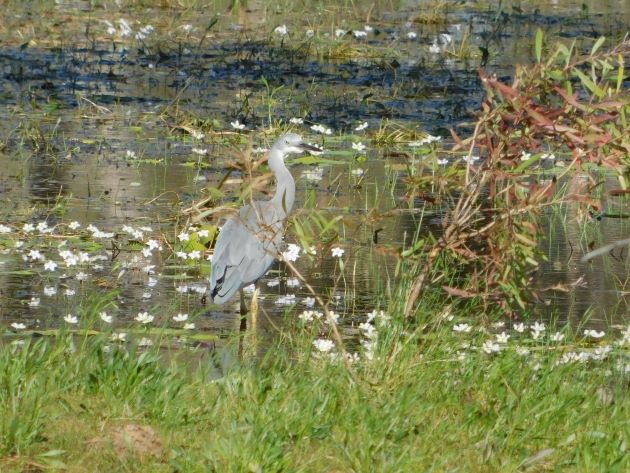
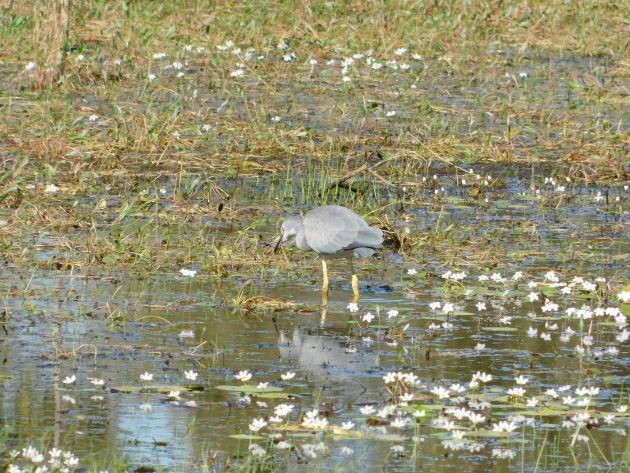
White-faced Heron
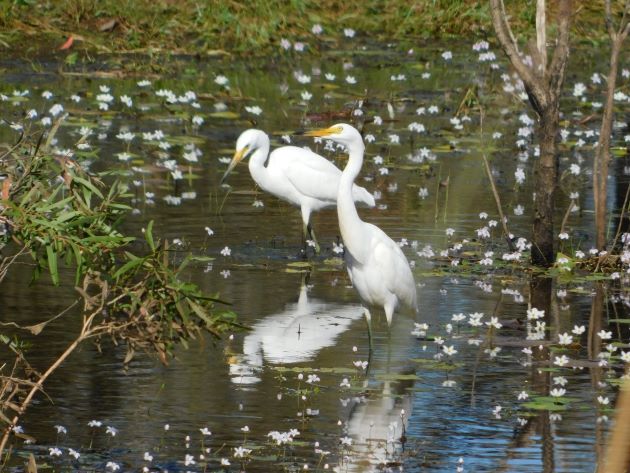
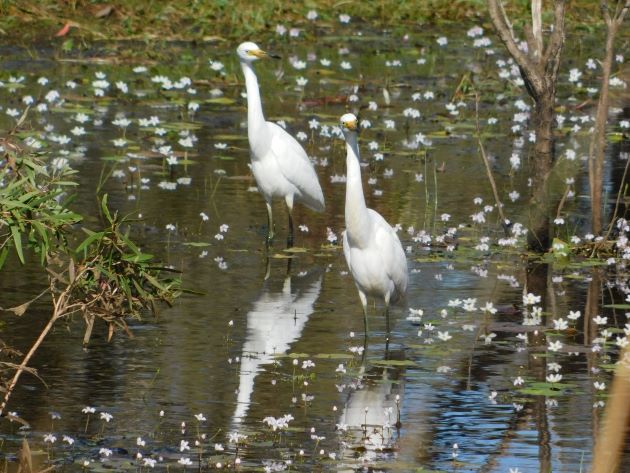
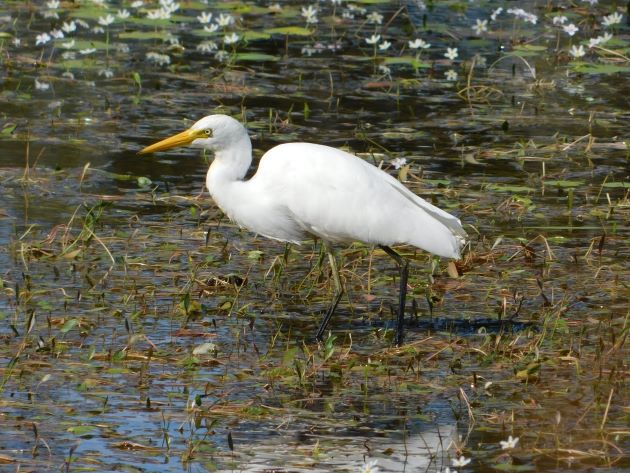
Intermediate Egrets
There are Wedge-tailed Eagles in the area that are making the most of any roadkill and the Herons and Egrets take to the sky when they soar through. The Herons and Egrets don’t always land very well when they try to perch on the trees in the flooded area!
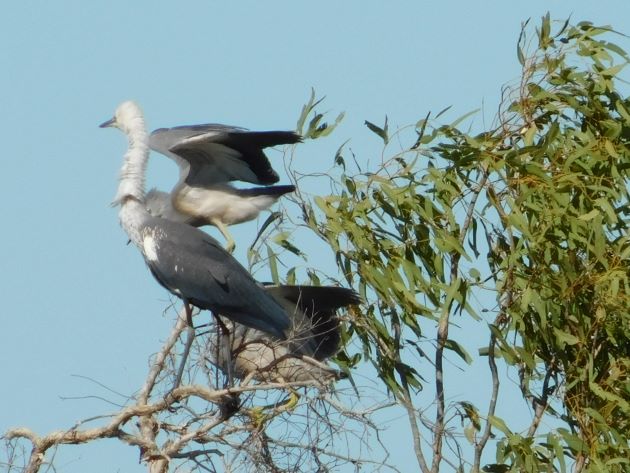
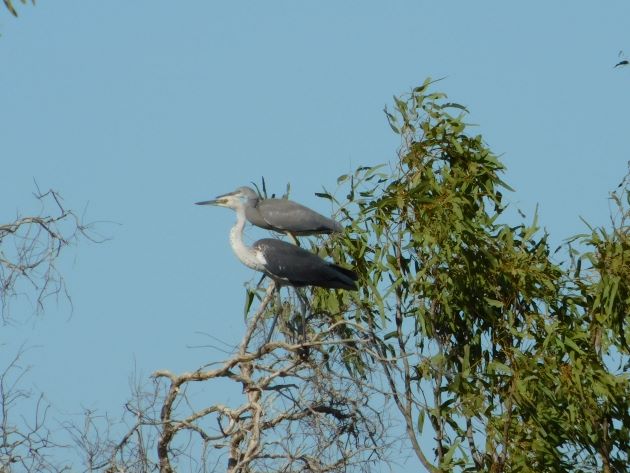
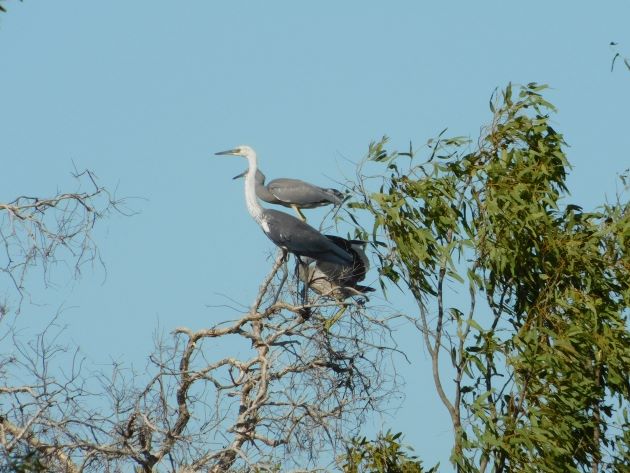
White-faced Herons and White-necked Heron trying to balance
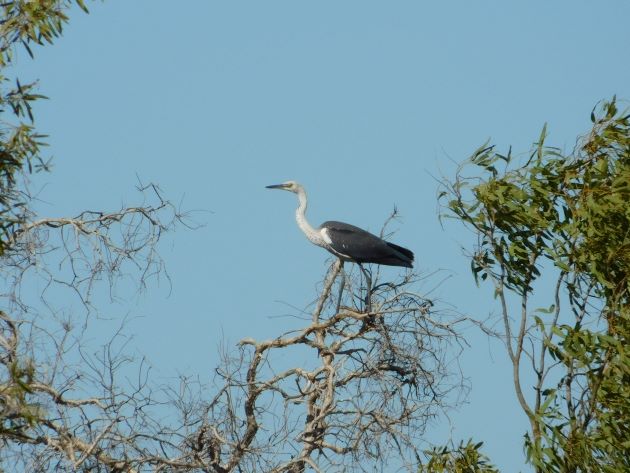
White-necked Heron
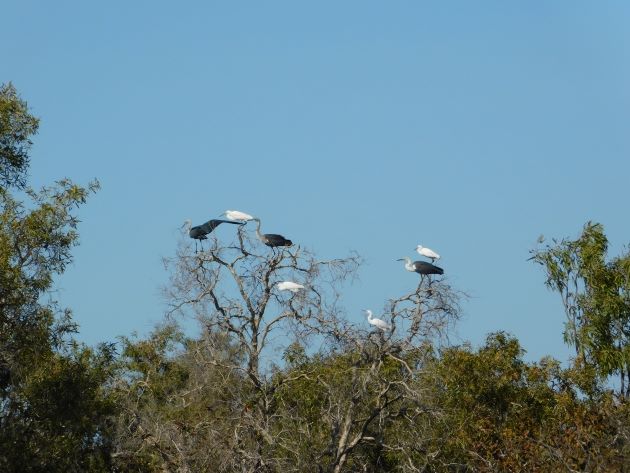
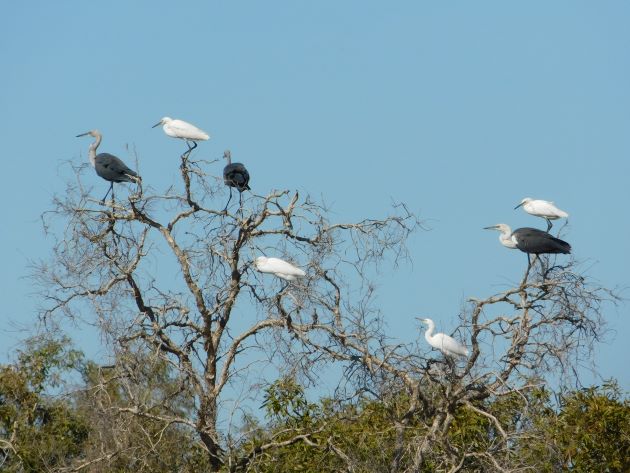
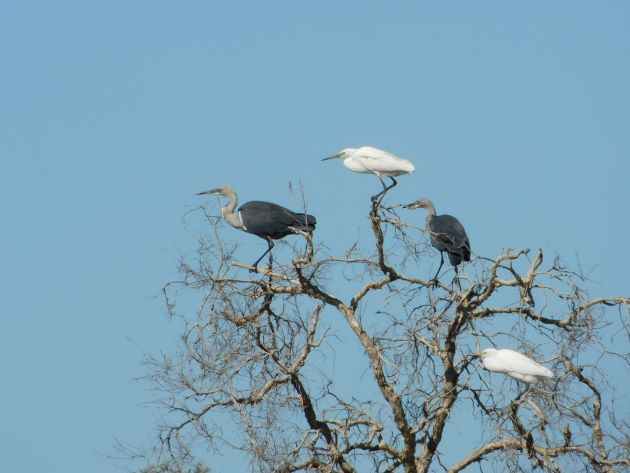
Precarious balancing!
One of the Great Egrets chose a more substantial perch and also managed to get some shade! The birds that manage to land in these trees are also much better camouflaged!
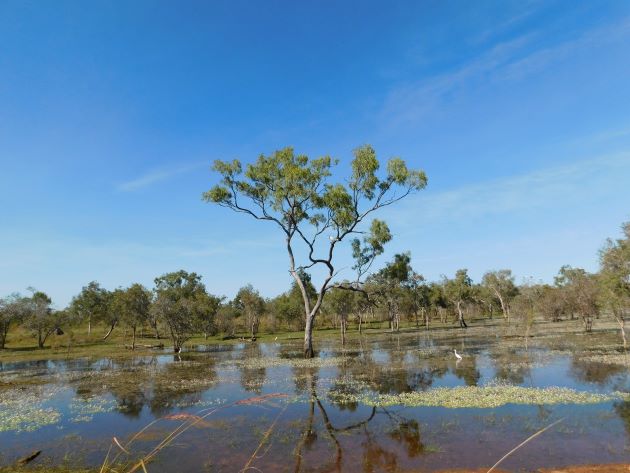
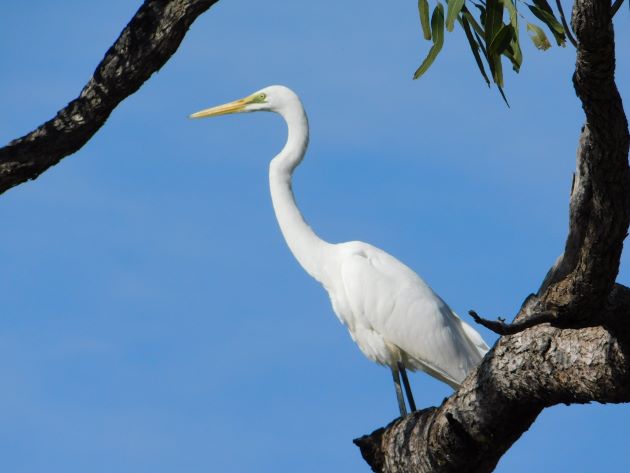
Great Egret
Now that we have much cooler day and night temperatures the water will remain in the area for quite some time. There appears to be ample food for the birds that have moved into the area, so it is always worth taking a few minutes to have a look when you see a good patch of flowers along the edge of the highway!













Leave a Comment